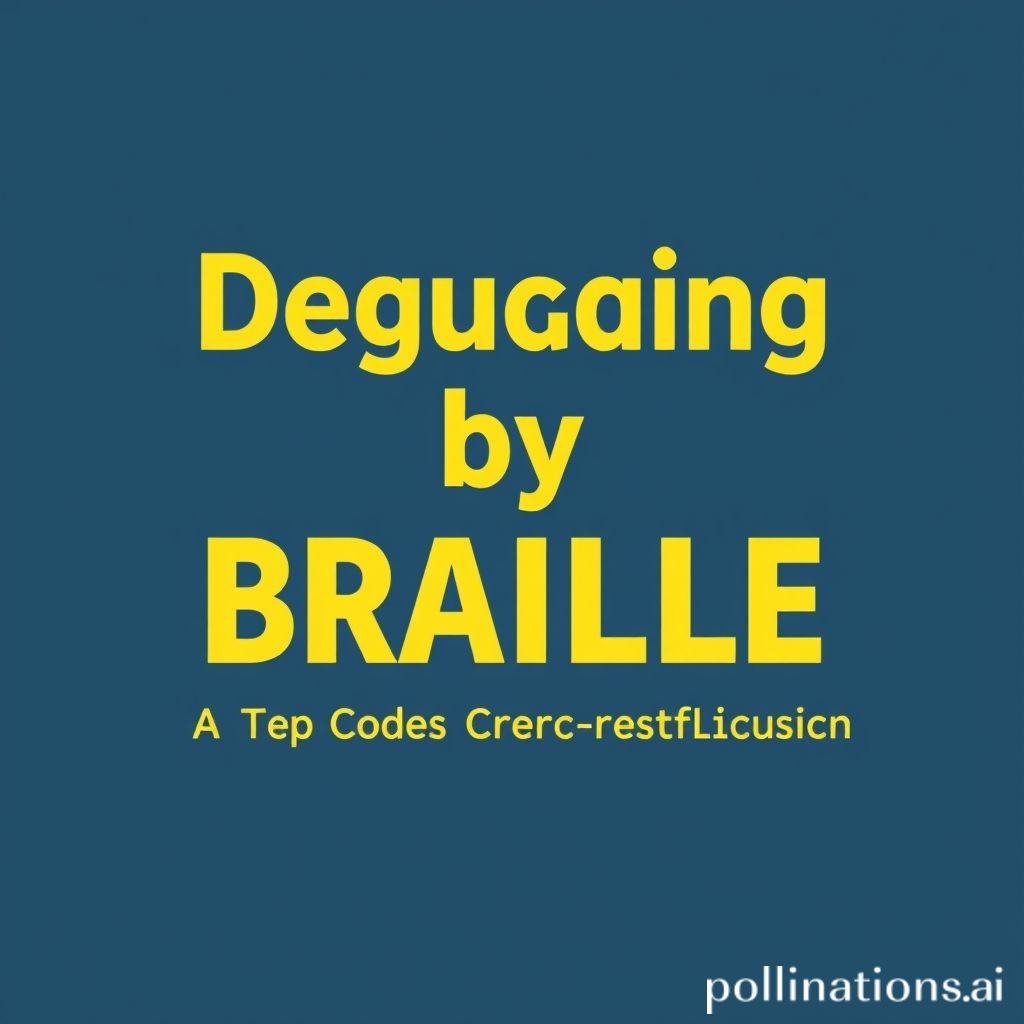
Debugging by Braille: A Tactile Approach to Code Correction
For sighted programmers, debugging typically involves visually scanning lines of code, looking for syntax errors, logical flaws, and unexpected behavior. But what about visually impaired programmers? The answer lies in innovative tools and techniques that leverage Braille to provide a tactile debugging experience. This article explores the world of debugging by Braille, highlighting the challenges, solutions, and the potential it holds for making programming more accessible.
The Challenges of Visual Debugging for the Visually Impaired
Traditional debugging methods rely heavily on visual cues. Error messages are displayed on screens, code is visually formatted for readability, and debuggers often present information through graphical interfaces. These methods are inherently inaccessible to visually impaired individuals, creating significant barriers to entry and advancement in the field of software development. The sheer volume of text in code, combined with the subtle nuances of syntax and semantics, makes visual debugging a daunting task, if not impossible, without alternative solutions.
Braille Displays: A Window into the Code
Braille displays, refreshable tactile devices that can render Braille characters, offer a crucial solution. These devices allow visually impaired programmers to read and interact with code in a tangible way. Specialized software translates code into Braille, which is then displayed on the device. This enables programmers to:
- Read code line by line, feeling the structure and syntax.
- Identify errors by recognizing misspelled keywords or incorrect punctuation.
- Navigate through code using keyboard shortcuts and Braille-specific commands.
- Review error messages and stack traces in Braille, gaining insights into the source of the problem.
Tactile Debugging Tools and Techniques
Beyond basic Braille displays, several tools and techniques are being developed to enhance the tactile debugging experience. These include:
- Braille Code Editors: Specialized code editors with built-in Braille support, allowing programmers to write, edit, and debug code directly in Braille.
- Tactile Code Highlighting: Using different Braille patterns or raised dots to represent different code elements, such as keywords, variables, and comments.
- Audio Feedback: Integrating audio cues to provide additional information about the code, such as the type of variable or the scope of a function.
- Collaborative Debugging Tools: Platforms that allow sighted and visually impaired programmers to collaborate on debugging tasks, leveraging both visual and tactile input.
The Future of Accessible Debugging
Debugging by Braille is not without its challenges. Braille displays can be expensive, and the learning curve for using tactile debugging tools can be steep. However, the potential benefits are immense. By providing visually impaired programmers with accessible debugging tools, we can unlock their talent and creativity, fostering a more inclusive and diverse software development community. Ongoing research and development efforts are focused on improving the affordability, usability, and functionality of Braille-based debugging solutions. As technology advances, we can expect to see even more innovative approaches to tactile debugging, further empowering visually impaired programmers to contribute to the world of software development.
